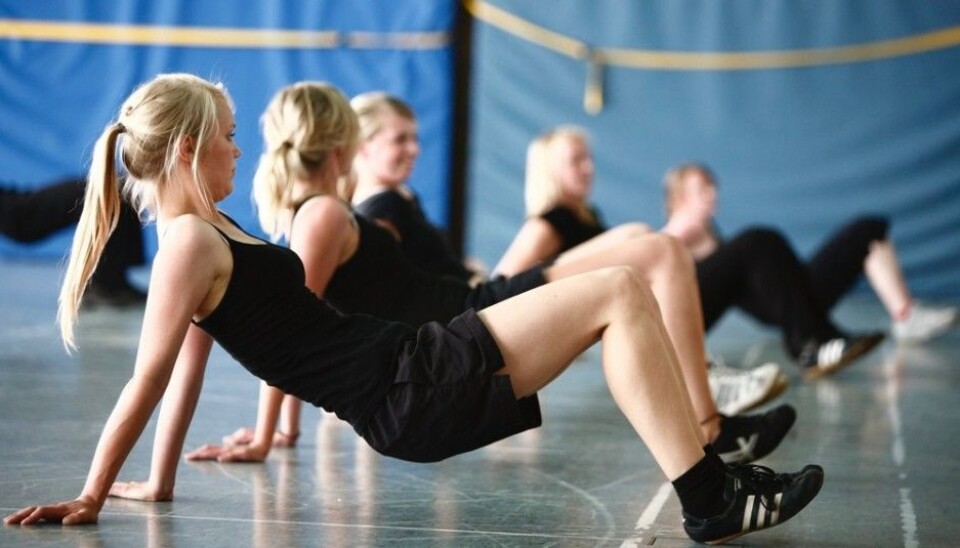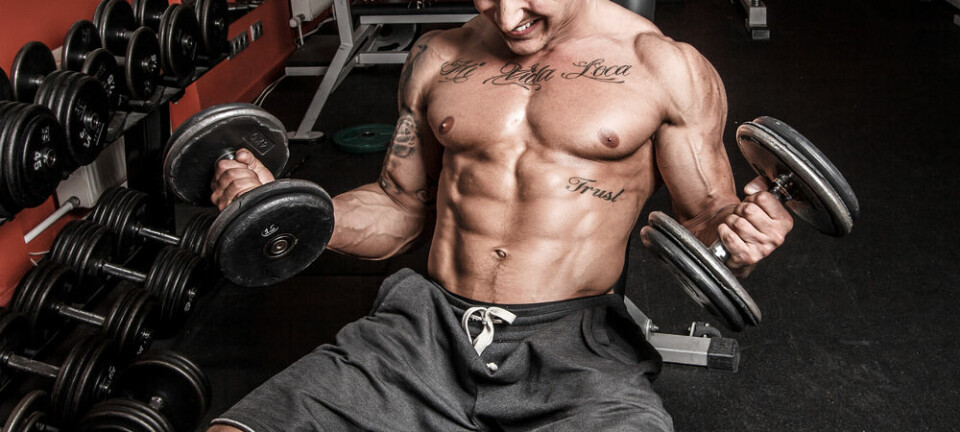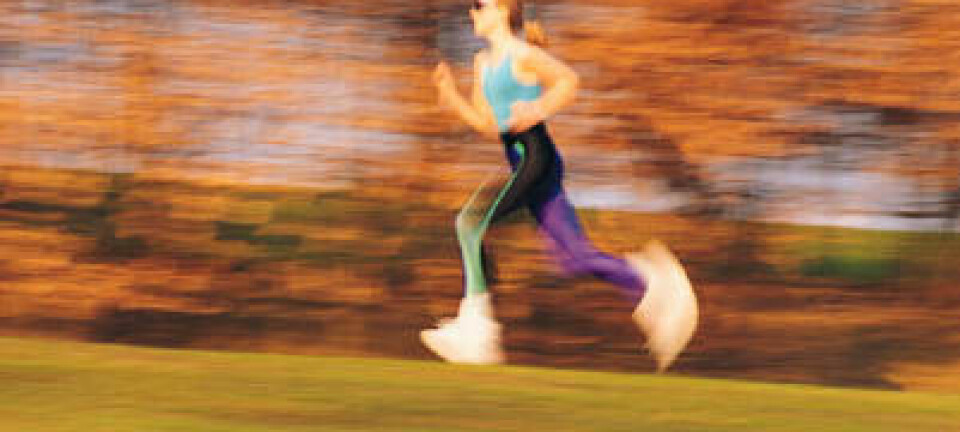
Fitness targeted in school gym classes
Raising pulses and preventing obesity in gym class are becoming more important than gaining motor skills. A professor strongly opposes to this.
“Math classes aren’t aimed at creating multimillionaires. Why should physical education classes try to solve all our public health challenges?”
The question is asked by Yngvar Ommundsen, professor at the Norwegian School of Sport Sciences. He is concerned about these developments.
Health at the cost of motor skills
Norway’s national teaching guidelines still stress the need to develop pupils’ physical condition and motor skills. But research indicates that health and fitness are now strongly emphasised in schools’ PE classes at the cost of efforts to develop motor skills.
A study by Kristin Walseth, Iselin Aartun and Gunn Engelsrud shows that girls mainly want of use their P.E. classes to develop beautiful bodies.
Other research indicates that P.E. is largely being reduced to a recreational subject, according to Ommundsen.
“Anything goes as long as the kids are happy and satisfied and have fun.”
Poorer motor skills
Plenty is said about the need to bolster pupils’ skills in mathematics, reading and writing. The professor in the Department of Coaching and Psychology at the Norwegian School of Sport Sciences says pupils’ motor skills have gone downhill and this is not getting nearly as much attention.
He says that studies show that elementary school children have poorer motor skills than they used to. And pre-schoolers are worse than they used to be at balancing and throwing objects.
Researchers in the Netherlands have studied the motor skill competence of school children. They found that in 2006 children aged nine to 12 scored worse in most parameters than children their age did in 1980. Eye-to-hand coordination, balance, speed, flexibility and mobility were less developed.
Physical education needs to stand out
Ommundsen thinks that P.E. now has to fight more to gain recognition.
“Following the so-called “Knowledge Lift” and the implementation of PISA exams, the subject is more oriented toward being accepted. So more emphasis is made on making P.E. be as much like the other subjects as possible. The utility value of the subject is gaining acceptance – for instance that it will aid the pupils’ ability to concentrate on other subjects, solve obesity problems and help eliminate bullying at school.”
Ommundsen thinks the subject needs to “stand on its own feet”. If too much emphasis is given to its utility value, then its practical position in school schedules could be reduced. Arguments can and are being made that others, outside the school, can take care of physical development.
At the subject’s core, thinks Ommundsen, is pedagogical work with the mastering of motor skills. He has written about it in the recently published Norwegian book Motorikk i didaktisk perspektiv.
“There is a general education core in the development of motor skills. This has been pointed out by many researchers in the field of physical education.”
Norwegian schools have traditionally been concerned about the cognitive aspects of children’s and adolescents’ learning and development. Obtaining motor skills has not received the same kind of attention, according to the professor.
“Good motor skills make the basis for solving tasks in moving about and need to be valued as key aspects of life skills. They are essential toward functioning in general and in participation in both work and leisure activities.”
Motor skills need to be learned
The officially appointed Ludvigsen committee issued a white paper in 2015 about the future needs in Norwegian education. It emphasised public health and was concerned about diminished attention on the need for schools to contribute to children’s motor skills.
“But the road from ideas to implementation is long. Among other things, very few P.E. teachers in primary schools, where this is most important, have an education in physical education.”
Children are in constant motion. Is this really something they need to learn?
“Learning to master motor skills is essential and it requires systematic practice like anything else that has to be learned. Strong support in research shows that if you wish to get into a culture where motion is taken for granted, you need to have your motor skills in order.”
Children who have good motor skills are more physically active. Several studies show that as they get older with insufficient motor skills they will participate less in games and play. This can even lead to social exclusion, explains Ommundsen.
Children aged four or five do not discern between performance and efforts. Efforts equate to performance for them. Things change drastically by the age of nine. Motivation becomes more important and they are more sensitive about what they can and cannot manage to do.
Wanting the P.E. teacher to be a PT
One of the objectives of physical education classes is to develop pupils’ self-images and make them feel positive and accepting about their bodies.
Associate Professor Kristin Walseth at the Oslo and Akershus University College is now completing the compilation of data in a project exploring what P.E. courses can do to help pupils develop critical reflections regarding all the pressure to have ideal bodies.
Tenth-grade pupils were interviewed and they said they were tired of all the ball games and want their P.E. classes to be more like fitness training and workouts at private gyms. They want their P.E. teachers to be more like personal trainers.
“We don’t want the pupils to be more concerned about their physical looks than about physical performance,” says Walseth in and interview with the the Oslo and Akershus University College. She thinks P.E. teachers have to dare bring this debate into their teaching and schools.
Sources:
Ommundsen,Y: Danning i kroppsøving: Motorisk læring som kjerne i faget. I: Motorikk i didaktisk perspektiv. (Kvikstad,I red). Oslo: Gyldendal, 2016. [Norwegian]
Ommundsen,Y: Fysisk-motorisk ferdighet gjennom kroppsøving – et viktig bidrag til elevenes allmenndanning og læring i skolen. Norsk Pedagogisk Tidsskrift, 97, 155-166, 2013 [Norwegian]
--------------------------------------
Read the Norwegian version of this article at forskning.no
Translated by: Glenn Ostling

































